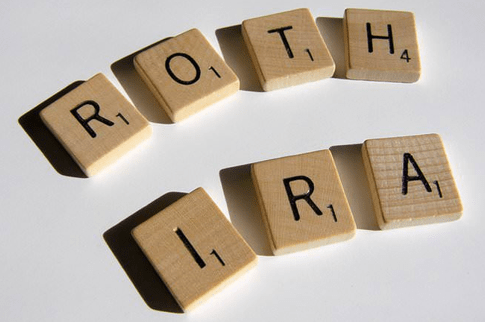Guide | What You Need to Know About IRA Distributions, Roth IRA Withdrawals & Early Penalties
Whether you are retired or looking to simply draw out additional funds along the way, understanding how IRA withdrawals and Roth IRA distributions can impact your retirement savings will help you manage your financial future.
Part of the appeal of an individual retirement account (IRA) is that it enables you to save money toward retirement without getting hit on your taxes. Long-term monetary growth through an IRA can either defer additional taxes or avoid taxes altogether.
With security and the potential for tax-free growth, an IRA will likely continue to be a popular choice for those looking to invest in future financial security.
For Roth IRA distributions and IRA withdrawals, this financial security is meant for the future, which is often defined by IRAs as a very specific point in time.
This specific point in time often depends upon age or extenuating circumstances, like death or inheritance. Still, many IRA account holders may find cause to take money from their IRA years before they had originally planned to.



Properly managing traditional IRA withdrawals and Roth IRA distributions means ensuring that your retirement funds can properly mature. Photo courtesy of Market Watch.
What happens when you withdraw savings from your IRA before retirement actually occurs? An IRA withdrawal — often called an IRA distribution — may have some unintended consequences.
Even when an IRA distribution occurs during retirement, there are rules that determine whether or not your savings will be taxed or fined.
Starting IRA distributions can have unintended consequences, typically resulting in a decrease in overall retirement savings.
If you are considering an IRA withdrawal, it is important to understand the IRA distribution rules for both IRA withdrawals and Roth IRA distributions.
Our review will take a closer look at the IRA distribution rules and provide a comprehensive list of the six things to know about IRA distributions and withdrawals. Our extensive analysis of these six 6 important things to know about IRA withdrawals and Roth IRA distributions includes:
- For IRA distribution, age matters
- Roth IRA distributions have different requirements
- A traditional IRA can be converted to a Roth IRA
- There are IRA required minimum distribution amounts
- An IRA distribution calculator clarifies IRA minimum distribution amounts
- Rollovers and transfers may affect IRA distributions
Having a retirement account is meant to save you money, but that doesn’t always mean that your money is available when you need it.
Some IRA distribution rules may make it difficult to keep your savings intact during an IRA withdrawal. If you find yourself considering making an IRA distribution, or using a Roth IRA to withdraw savings, there are a few key characteristics about early withdrawals that you should keep in mind.
Our expert list will provide crucial guidance and understanding about the different types of IRAs, various IRA distribution rules, and ways to get traditional IRA distributions and Roth IRA distributions with minimum penalties.
See Also: American Funds Review | What You Should Know About American Funds Retirement Solutions
All-in-One Change Management Tools
Top Rated Toolkit for Change Managers.
Get Your Change Management Tool Today...
Different Types of IRAs
There are three main types of IRAs, and each one may have their own rules and specifications when it comes to IRA distribution rules.
Typically, IRA distributions are broken down into two sections: traditional IRA withdrawals (which includes rollover IRAs) and Roth IRA distributions.
Before getting into rules for an IRA withdrawal, it is important to define each type of IRA. The three types of IRA distributions are:
- Traditional IRA
Contributions are made with money that can be deducted on a tax return, and earnings grow tax-free until they are used in retirement. Once retirement occurs and the funds are withdrawn, they are typically taxed at a lower rate. A traditional IRA withdrawal will come with taxation, but the goal is to keep taxes as low as possible to enhance savings.
- Roth IRA
Contributions are made with money that has already been taxed, and savings grow tax-free. Roth IRA distributions in retirement are tax-free, if you meet certain conditions. If the account holder meets one or more of these conditions, a Roth IRA early withdrawal will not be taxed or penalized.
- Rollover IRA
A traditional IRA distribution that is meant to include money that is “rolled over” from another retirement plan, like a 401(k). Because this IRA is considered a traditional IRA withdrawal, there will be taxes when the money is withdrawn.
While each IRA plan may offer their own unique benefits, they also each have their own unique rules and regulations, which can affect your ability to make an IRA withdrawal or receive Roth IRA distributions. Because an IRA is meant to last until retirement, tax benefits and savings often only apply if the money is actually kept in the IRA until retirement. Without exercising caution, more often than not, an IRA distribution may actually decrease retirement savings.
Don’t Miss: Best States to Retire in the U.S. (Review of the Top Retirement States)
6 Things to Know About IRA Distributions & Withdrawals



Understanding the IRA minimum distribution requirements and rules early on can help preserve retirement savings for the future. Photo courtesy of Valic.
When it comes to Roth IRA withdrawals and traditional IRA withdrawals, there are some key components that each and every account holder should know before beginning the withdrawal process.
Our review has gathered the top six things to know about IRA distributions and withdrawals, including an early withdrawal from a Roth IRA, and the IRA minimum distribution rules.
Keeping these key things in mind will help prepare you to use your Roth IRA distributions and your IRA distributions in the most efficient and cost-effective way.
1. For IRA Distribution, Age Matters
Depending upon your age when you make your first IRA distribution, there are certain IRA distribution rules that may result in monetary penalties. When considering an IRA withdrawal for a traditional IRA, there are two age ranges that can affect the amount of IRA distribution penalties.
- IRA withdrawals between 59 ½ and 70 ½
Once you reach age 59 ½, you can begin taking out funds from your IRA without suffering any monetary penalties. However, keep in mind that you may need to pay state or federal taxes once you begin taking out money.
- IRA withdrawals after 70 ½
At 70 ½ and beyond, those who own a traditional IRA are required to begin making withdrawals. IRA distribution at age 70 ½ is considered mandatory, and without making withdrawals, there can be some severe penalties.
Depending upon the IRA, age can apply to both the age of the account holder as well as the IRA account itself. For traditional IRA distributions, the biggest factor in determining IRA distribution rules and penalties lies within the age that you first decide to make an IRA withdrawal.
2. Roth IRA Distributions Have Different Requirements



Photo courtesy of Diffen
With relaxed requirement, using a Roth IRA to withdraw savings is often a much easier task than with traditional IRA withdrawals. .
While the above IRA distribution rules apply to traditional IRAs and rollover IRAs, there is a separate set of rules for Roth IRA distributions. It is possible to make a Roth IRA early withdrawal if the following requirements are met:
- Account has passed the 5-year aging requirement
- Account holder is over the age of 59 ½
- There has been a death or disability
- Account holder is making a qualified first-time home purchase
A Roth IRA early withdrawal that does not meet these conditions is subject to taxation of earnings, along with a 10% additional tax. Roth IRA distributions dictate that, as long as the account holder is 59 ½ years of age or meets any other requirement, there is no Roth IRA withdrawal penalty.
Although the requirements are different for Roth IRA withdrawals, age certainly matters. Using a Roth IRA to withdraw funds is typically a much more forgiving process when compared to traditional IRAs, especially when considering that the Roth IRA withdrawal penalty only applies before the age of 59 ½.
Still, when considering an early withdrawal from a Roth IRA, understanding the requirements can certainly save you from potentially suffering unnecessary penalties and taxation. Many IRA account holders find that, because the Roth IRA withdrawal penalty is easier to avoid, Roth IRA distributions are also easier to manage.
Related: Do I Have Enough to Retire? Find out If You Have Enough Money for Retirement



3. A Traditional IRA Can Be Converted to a Roth IRA
Converting a traditional IRA into a Roth IRA can have some serious benefits once it comes time for an IRA withdrawal. An early withdrawal from a Roth IRA can often be much more feasible than a traditional IRA withdrawal. Roth IRA distributions tend to have less taxes and less fees and provide the ability to withdraw funds as early as 59 ½ without penalty.
Regardless of income or marital status, anyone can convert a traditional IRA into a Roth IRA. Prior to 2010, there were some steep rules about conversion: only account holders with a modified gross income of $100,000 were eligible to convert. After 2010, Roth IRA distributions became much more accessible.
Now, eligibility to convert to a Roth IRA is based on four factors: age, tax status, adjusted gross income, and existing 401(k) plans. Because Roth IRA withdrawals allow for monetary benefits to be passed on to families after death, as well as for earlier access to savings, Roth IRA distributions tend to be more favorable. Thankfully, it is possible to convert a traditional IRA into a Roth IRA.
4. There Are IRA Required Minimum Distribution Amounts



Knowing the rules for IRA minimum distribution can deter unnecessary fees and penalties over the life of the IRA. Photo courtesy of Bankrate.
When it comes to IRA distribution, there are rules regarding the IRA minimum distribution amounts. Simply put, the IRS describes the IRA required minimum distribution as the minimum amount that you are mandated to draw out of your IRA each year.
For traditional IRA withdrawals, the IRA minimum distribution must be received by the time the account holder turns 70 ½. Each IRA required minimum distribution is determined by using an IRA distribution calculator, which takes prior balance and life expectancy into account to determine the IRA minimum distribution for each year.
In order to calculate the IRA minimum distribution for each individual IRA, the IRS provides two different worksheets to help determine the minimum amount for each year. These two worksheets can help determine IRA minimum distribution amounts for:
- General IRA distribution calculator worksheet
This particular IRA distribution calculator will use current age, projected life expectancy, and current dollar value of the IRA account to determine what the IRA minimum distribution amount is.
For example, at age 70, the projected life expectancy is 27.4 years, which means that the IRA minimum distribution is found by dividing the total amount of the IRA by 27.4. In contrast, the IRA required minimum distribution for those withdrawing at age 80 is found by dividing the total IRA amount by a life expectancy of 18.7 years.
- IRA distribution calculator worksheet for spouse beneficiary
If a spouse is the sole beneficiary of your IRA and is more than 10 years younger than the account holder, a separate IRA distribution calculator is used by the IRS. The age and life expectancy will be determined by the intersection of the ages of the account holder and spouse beneficiary.
The penalty for not withdrawing the IRA required minimum distribution amount is a 50% tax on the amount that was not properly withdrawn. Failing to understand or adhere to the IRA minimum distribution requirements can certainly create some expensive taxation fees. For this reason, it is crucial to understand the rules for minimum IRA withdrawals.
The only time that an IRA minimum distribution applies to Roth IRA distributions is when the account holder passes away, or if a Roth IRA is inherited. During the life of the account holder, a Roth IRA has no IRA minimum distribution requirements. The only IRA minimum distribution rule for Roth IRA distributions made post-mortem is that the entire amount must be withdrawn within five years after death.
5. An IRA Distribution Calculator Can Clarify IRA Minimum Distribution Amounts
While the IRS provides their own worksheets for use in determining IRA minimum distribution, many account holders find it helpful to utilize additional resources for an IRA distribution calculator. Rather than the account holder independently working through various facts and figures, an IRA distribution calculator does all the work. This tool can determine the IRA minimum distribution requirements with little to no effort on the part of the account holder.
Some worthwhile websites to use for an IRA distribution calculator include:
Using Bankrate’s calculator to determine IRA minimum distribution not only provides accurate figures, but account holders will also get a specialized graph. This graph will display how the projected IRA minimum distribution will affect the IRA account balance over time.
As a trusted name in personal finance topics, Kiplinger publishing has provided an incredibly simple tool to determine mandatory IRA minimum distribution amounts. Simply use your age and total balance amounts from the previous year to learn your individual IRA minimum distribution.
6. Rollovers and Transfers May Affect IRA Distributions



The IRS has set up specific rules regarding IRA distributions for rollovers and transfers. Photo courtesy of Spero News.
Rolling over a previously established, qualified retirement account — like a 401(k) —into an IRA account is not considered to be an IRA withdrawal. Using rollover IRA accounts means that money can fluctuate between accounts without additional fees or penalties, regardless of age. A transfer between IRA accounts can operate in the same way and is often called an IRA distribution — but there can be additional fees and penalties if it is not done correctly.
An IRA distribution that goes directly from one financial institution into the other is a simple transfer and will not incur additional fees or penalties. If the funds from an IRA distribution come directly to you, and they are not returned to your IRA account within 60 days, there may be additional taxes. Additionally, this type of temporary IRA withdrawal can only be done once every 12 months.
If a retiree is looking to convert their traditional IRA account into a Roth IRA account, it is important to note that the IRA minimum distribution cannot be rolled over. In that instance, the required IRA distribution amount can only roll over to another traditional IRA account. When considering an IRA withdrawal, make sure that your rollovers and transfers will not inhibit your ability to avoid taxes and fees.
Popular Article: Retirement Planning | Complete Guide to Help You Plan for Retirement
Conclusion



No matter what IRA you may have, understanding each and every component of your IRA can help you securely and wisely make IRA withdrawals and Roth IRA distributions. Photo courtesy of The Wall Street Journal.
Saving money for the future is nationally recognized as a worthwhile, and even necessary, practice. For those who hope to retire one day, establishing a solid base of savings is paramount.
In fact, many financial experts suggest that you may need to use up to 85% of your pre-retirement income during retirement. An IRA is a great way to help put money away toward retirement — but sometimes, an IRA withdrawal is necessary before retirement. Even during retirement, there can be complications with IRA distributions.
When considering an IRA distribution, the single best way to determine a course of action is to take a deep look into the innate requirements and components of IRA withdrawals and Roth IRA distributions. Knowing what penalties and fees may occur is the best way to shield your retirement savings from drawing excessive taxes and penalty fees.
By keeping these six components of IRA withdrawals in mind, each and every IRA account holder will be well-informed and, ultimately, better equipped to successfully protect and manage their IRA distributions.
Read More: Sep IRA Rules| What You Need to Know about SEP Withdrawal, Contributions, and Plan Rules
AdvisoryHQ (AHQ) Disclaimer:
Reasonable efforts have been made by AdvisoryHQ to present accurate information, however all info is presented without warranty. Review AdvisoryHQ’s Terms for details. Also review each firm’s site for the most updated data, rates and info.
Note: Firms and products, including the one(s) reviewed above, may be AdvisoryHQ's affiliates. Click to view AdvisoryHQ's advertiser disclosures.



